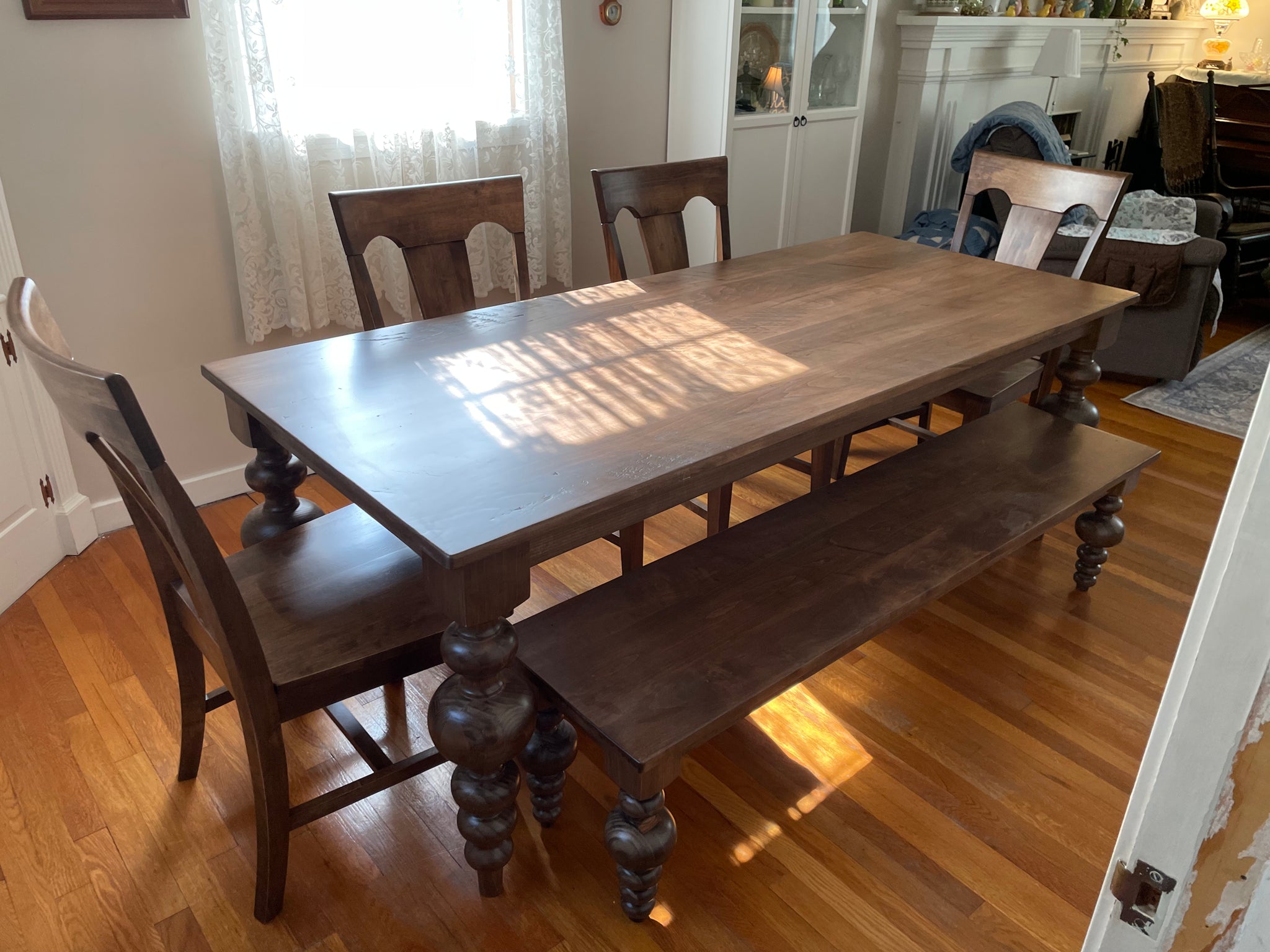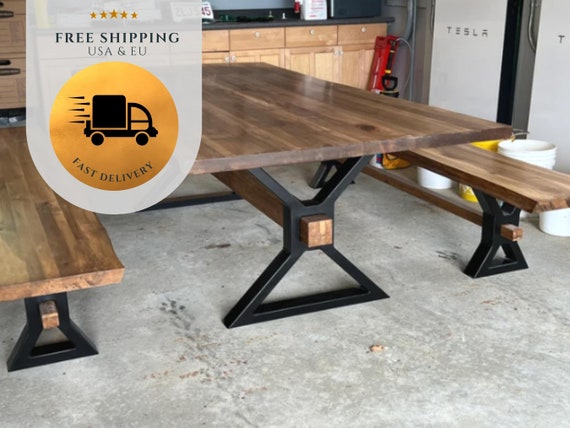Add Charm and Elegance to Your Space with Distinct Dining Room Table Legs
From Traditional to Modern: Discover the Suitable Dining-room Table Legs for Your Style
While timeless designs such as cabriole and turned legs stimulate a feeling of ageless elegance, modern styles like barrette and geometric choices offer an opportunity for striking aesthetic passion. As you take into consideration these elements, the inquiry continues to be: how can you flawlessly integrate these varied leg designs to develop a harmonious eating experience?
Comprehending Table Leg Styles
The range of dining-room table leg designs can dramatically influence both the appearances and functionality of the room. Each leg style adds distinct visual components and functional attributes, catering to varied layout preferences and use needs. Comprehending these designs is important for selecting the ideal table that lines up with your general interior layout vision.
As an example, tapered legs provide a clean, timeless appearance that can enhance a room's elegance, while stand bases offer security and make the most of legroom, making them perfect for smaller sized rooms. Hairpin legs, a characteristic of mid-century modern design, present a commercial flair, enabling an airy, open feeling. Trestle legs stimulate rustic charm, offering durable assistance and a feeling of timelessness.
Wood legs can bring heat and structure, whereas steel choices typically convey a sleek, contemporary ambiance. Ultimately, comprehending table leg designs is crucial for creating a cohesive dining area that mirrors personal style while guaranteeing functionality and comfort.
Conventional Table Leg Options
When choosing dining area table legs, traditional options usually embody classic sophistication and craftsmanship. These layouts show a rich heritage and a commitment to high quality, making them optimal for those that appreciate timeless aesthetic appeals.
One of the most famous standard leg styles is the cabriole leg, identified by its stylish rounded form. This design often features attractive makings and is most typically located in Queen Anne and Chippendale furnishings. One more popular choice is the turned leg, which flaunts a collection of smooth, rounded forms that provide a timeless appearance while preserving stability.
Moreover, the straight leg, while simple, uses a basic and strong structure that can blend perfectly with a range of tabletop styles. For those attracted to ornate detailing, claw-and-ball feet legs evoke a sense of magnificence and can function as a sensational focal factor in any kind of eating area.
Last but not least, stand bases, although not purely legs, give an alternative traditional choice that enables adequate legroom and can be beautifully carved. Each of these standard leg styles adds to the total atmosphere of a dining-room, weding feature with aesthetic charm.

Modern Table Leg Styles
Modern table leg styles supply a diverse variety of styles that highlight clean lines and innovative materials. These designs often focus on capability read the full info here while functioning as striking centerpieces within an eating area. Minimal aesthetic appeals are prevalent, with legs crafted from materials such as metal, glass, and engineered timber, which add to a contemporary and ventilated feeling.
One popular design is the hairpin leg, identified by its slender, conical structure that offers security without frustrating the tabletop (dining room table legs). This style is commonly located in mid-century modern-day furniture and can easily match various eating table shapes. Another trend is making use of geometric forms, where legs may tackle angular or unbalanced forms, including visual interest and a touch of artistry

Mixing Styles for Special Areas
Usually, homeowners seek to develop one-of-a-kind dining spaces that show their personal style by mixing numerous design components. This strategy permits the consolidation of varied looks, resulting in a harmonious yet link distinct atmosphere. Combining a rustic wooden table with smooth, modern steel legs can develop an attractive contrast that raises the room's overall appeal.
Additionally, incorporating vintage table legs with contemporary tabletops can stimulate a feeling of background while maintaining a modern sensibility. Such mixes not just showcase specific preference however likewise urge creative thinking, enabling property owners to curate an area that feels both individual and welcoming.
Color plays an important duty in this blending procedure; picking table legs that complement or contrast with the existing color design can boost visual passion. For example, whitewashed legs can soften the daring of official source a dark table surface, developing a well balanced aesthetic.
Tips for Choosing the Right Legs
Picking the right table legs is essential for accomplishing both functionality and aesthetic charm in your dining area. Begin by thinking about the general design of your space. Standard settings take advantage of legs that include intricate carvings or transformed styles, while modern rooms may call for streamlined, minimal designs.
Next, assess the elevation and stability of the legs. dining room table legs. Conventional dining tables range in between 28 to 30 inches in elevation, so make sure the legs complement this dimension for convenience. Additionally, durable products, such as hardwood or metal, can boost stability and long life
Examine the leg form as well-- choices consist of directly, tapered, or pedestal layouts. Straight legs supply a traditional look, while tapered legs can include a touch of sophistication. Pedestal bases provide enough legroom and are excellent for smaller areas.
Final Thought
In summary, choosing the optimal dining room table legs requires cautious factor to consider of both modern-day and conventional designs. Typical options such as cabriole and turned legs use timeless beauty, while contemporary designs like barrette and geometric shapes supply a modern touch. By balancing leg design, elevation, and product with the overall decor, a cohesive and welcoming environment can be accomplished. Ultimately, the chosen table legs need to mirror the wanted aesthetic, boosting the eating experience within the space.
The variety of dining area table leg designs can considerably influence both the appearances and capability of the room. Inevitably, understanding table leg styles is vital for producing a cohesive dining location that mirrors personal design while making certain functionality and comfort.One of the most legendary typical leg styles is the cabriole leg, identified by its elegant rounded shape. Straight legs provide a traditional appearance, while conical legs can add a touch of elegance.In recap, choosing the suitable dining area table legs calls for cautious consideration of both standard and modern-day styles.